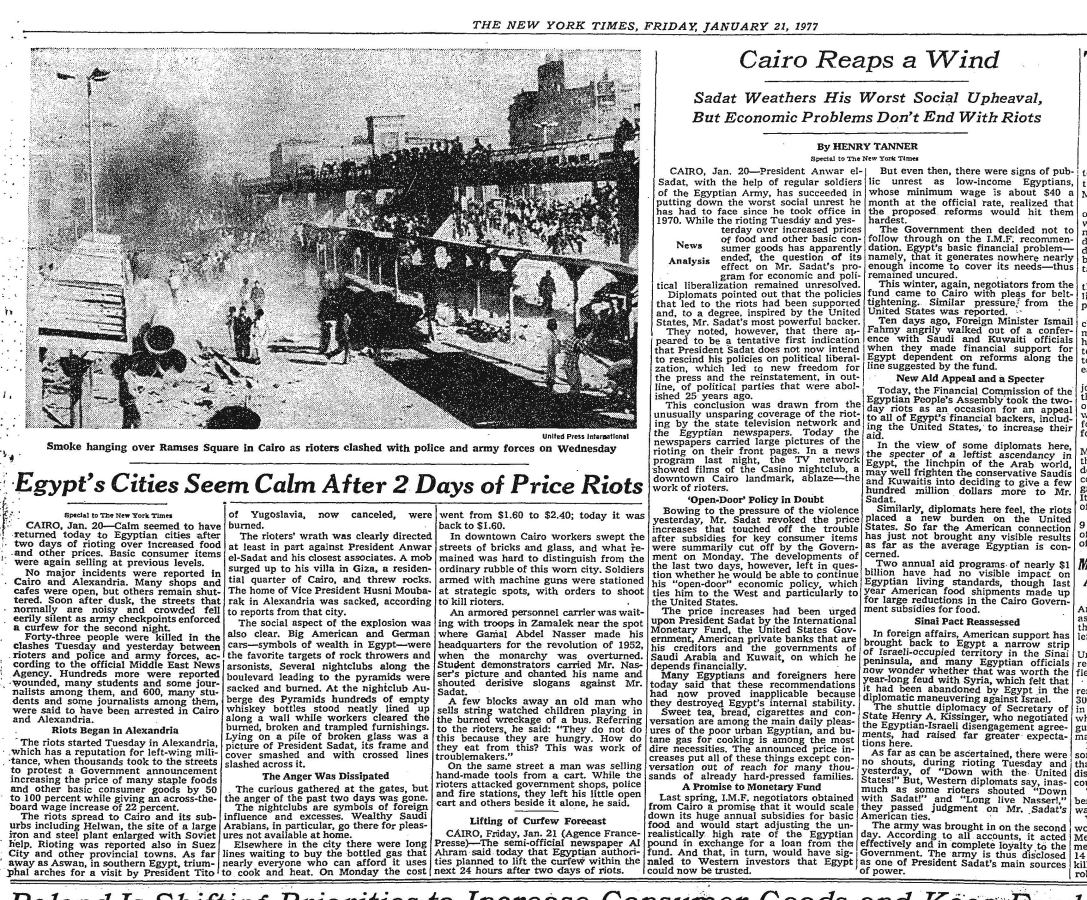(scroll to bottom for NYT article)
This week marks the infamous bread riots that rocked Egypt in 1977, and was arguably a precursor to the 2011 Egyptian Revolution. The New York Times ran the story on the riots with this peculiar paragraph:
“The riots started Tuesday in Alexandria, which has a reputation for left-wing militance, when thousands took to the streets to protest a Government announcement increasing the price of many staple foods and other basic consumer goods by 50 to 100 percent while giving an across-the-board wage increase of 22 percent. The riots spread to Cairo and its suburb of Helwan”
What’s unusual about the NYT piece is that it’s one of the few then contemporary accounts, though brief, to accurately name the geographical spark of the riot and label its perceived political profile.
It’s often baffling as to why a city that sparked off the riots and known for its “left-wing militance” could not garner any interest from then reporters – Egyptian or foreign – to investigate further, but basically recycle from their Cairo hotels and stations the same news coming out of Alexandria, such as the burning of the historical Alexandria Stock Exchange. There is a scarcity of interviews or even later research on what made Alexandria a tinderbox on a local level in January 1977. Unfortunately, all of Egypt’s problems, like today, are grouped into a national narrative, rather than seeking out what unique factors existed in each area.
This information vacuum has been one of the casualties of centralisation. The problem of Centralisation is not just about power and resources shifting to the capital, but it also undermines the media presence and research interest in the cities and towns affected. It gutters a large city like Alexandria in reducing the incentive for foreign correspondents to have been present in Alexandria at the time of the riots. As a researcher on Alexandria myself, this forces one to rely on oral interviews, which is a credible approach no doubt, but one would expect that a large event such as this to leave better accounts than what is available today.
Furthermore, 1977 also signposts that not much has changed today, besides the obvious political and socio-economic dimension; For a city of over four million, Alexandria is yet to acquire locally robust media organisations and a publishing industry. There is Egypt, and then there is “Egypts”, all fighting their unique yet complementary battles.







